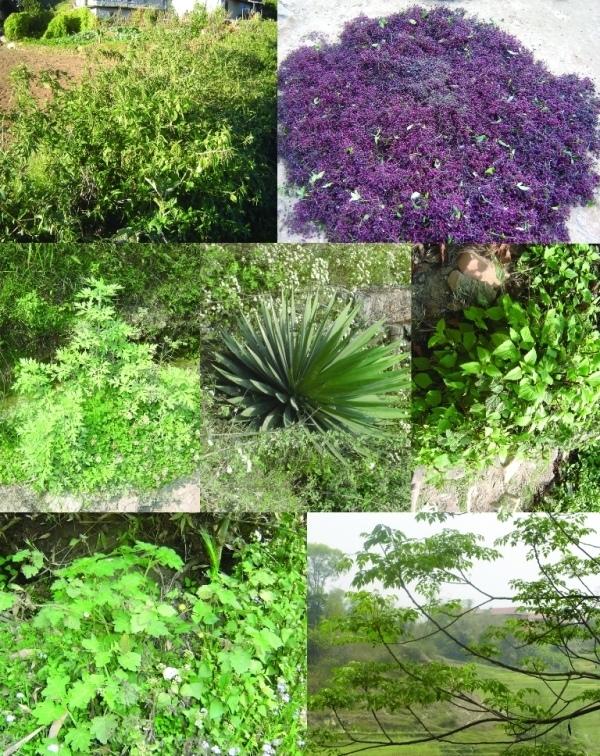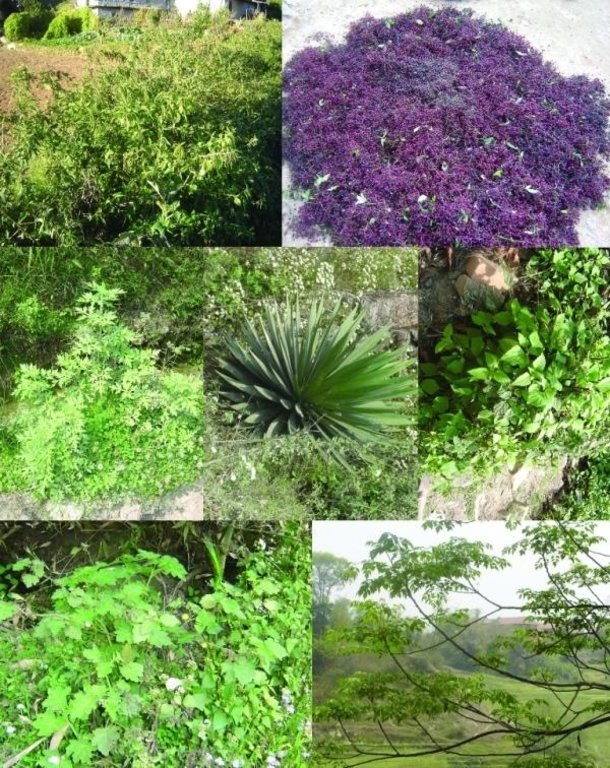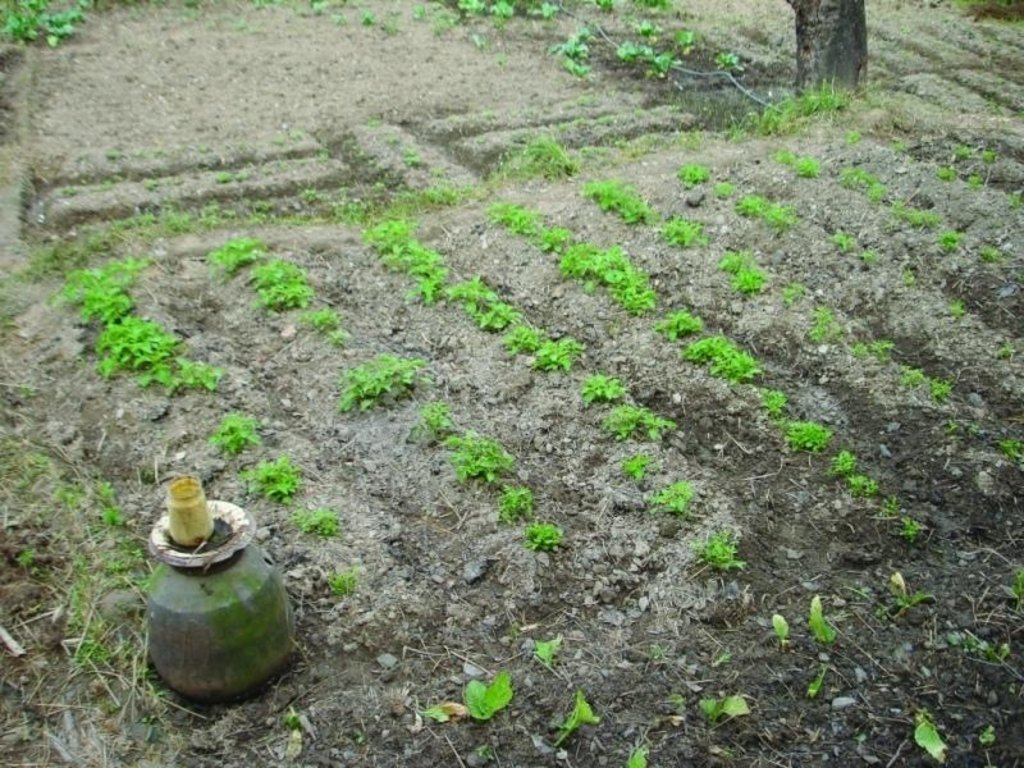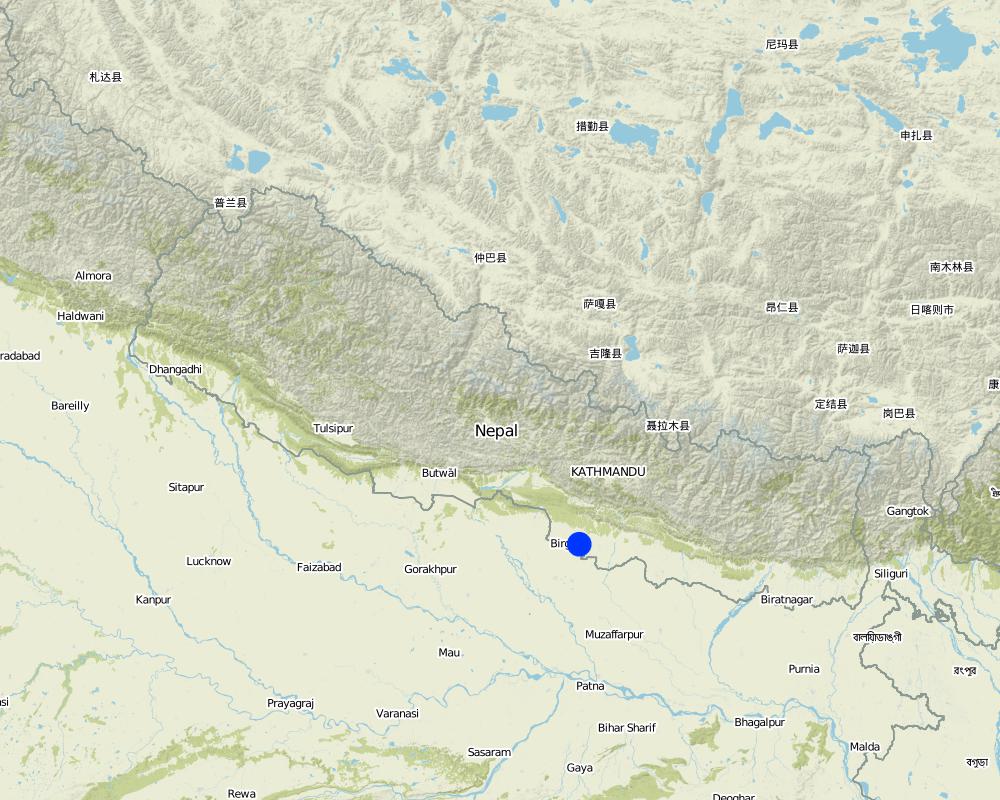Organic pest management [Népal]
- Création :
- Mise à jour :
- Compilateur : Richard Allen
- Rédacteur : –
- Examinateurs : David Streiff, Alexandra Gavilano
Jaibik rogkira byabasthapan (Nepali)
technologies_1755 - Népal
Voir les sections
Développer tout Réduire tout1. Informations générales
1.2 Coordonnées des personnes-ressources et des institutions impliquées dans l'évaluation et la documentation de la Technologie
Spécialiste GDT:
Director
Soil Management Directorate, Department of Agriculture
Népal
Spécialiste GDT:
Team Leader
Sustainable Soil Management Programme
Népal
Nom du projet qui a facilité la documentation/ l'évaluation de la Technologie (si pertinent)
Sustainable Soil Management Programme, Nepal (SSMP)Nom du ou des institutions qui ont facilité la documentation/ l'évaluation de la Technologie (si pertinent)
Department of Agriculture, Soil Management Directorate, Hariharbhawan Lalitpur (doasoil) - NépalNom du ou des institutions qui ont facilité la documentation/ l'évaluation de la Technologie (si pertinent)
HELVETAS (Swiss Intercooperation)1.3 Conditions relatives à l'utilisation par WOCAT des données documentées
Le compilateur et la(les) personne(s) ressource(s) acceptent les conditions relatives à l'utilisation par WOCAT des données documentées:
Oui
1.5 Référence au(x) Questionnaires sur les Approches de GDT (documentées au moyen de WOCAT)

Farmer field schools on integrated plant nutrient systems [Népal]
Participatory and collaborative learning through the farmer field school approach
- Compilateur : Richard Allen
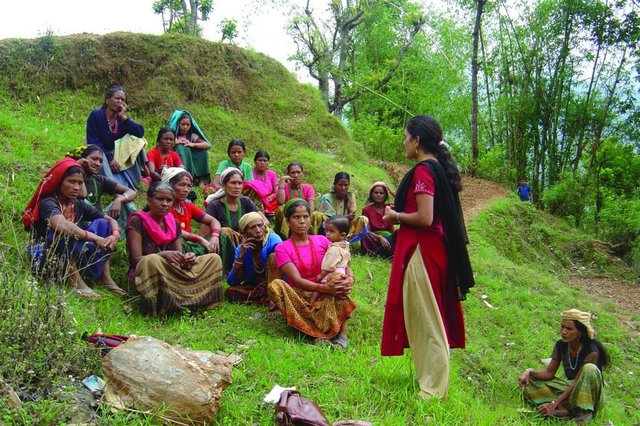
Farmer-led experimentation [Népal]
Participatory technology testing and adaptation through farmer-led experiments
- Compilateur : Richard Allen

Farmer-to-farmer diffusion [Népal]
Wider diffusion of sustainable soil management technologies through a demand responsive farmer-to-farmer diffusion approach
- Compilateur : Richard Allen
2. Description de la Technologie de GDT
2.1 Courte description de la Technologie
Définition de la Technologie:
Promotion of botanical pesticides for organic pest management and liquid manure
2.2 Description détaillée de la Technologie
Description:
Production of fresh vegetable is often hampered by pests which may reduce production and badly affect farmers’ income. Chemical pesticides are available and are used, sometimes excessively, to combat these pests in parts of Nepal’s midhills. Botanical pesticides prepared from a variety of plant ingredients soaked and fermented in cattle urine provide a suitable alternative to chemical pesticides, at least for subsistence and semi-commercial vegetable producers. These pesticides are based on farmer’s traditional knowledge and are emerging as alternatives to the application of chemical pesticides.
All the ingredients for these pesticides are available locally; in some cases the plants are considered as weeds. Crofton weed (banmara) grows in abundance along roads and paths, and on forest floors and suppresses the growth of other more valuable species. It is believed to have pesticidal effects and is often used in botanical pesticides. The Nepali names of other plants commonly used in the tonics are asuro (malabara tree), titepati (mugwort), bakaino (Persian lilac), timur (Nepali pepper), patina (field mint), tulsi (sweet basil), neem, sisnu (stinging nettle), ketuke (century plant), and khirro (tallow tree). In general it is said that herbs and plants that are bitter, pungent, or ‘hot’ or that produce a strong odour are most effective in botanical pesticides.
The botanical pesticide is diluted with water before applying to vegetable crops. The dilution ratio depends on the age and type of the plant being treated with a higher dilution for seedlings in nurseries than for mature plants. While botanical pesticides do not kill all pests, they do combat soft-bodied insects such as aphids and act as a repellent against larger insects like cutworms, various larvae, and red ants. They are not usually effective against plant diseases.
In some places innovative farmers have started to produce and sell botanical pesticides for pest management and as a liquid manure for foliar application.
2.3 Photos de la Technologie
2.5 Pays/ région/ lieux où la Technologie a été appliquée et qui sont couverts par cette évaluation
Pays:
Népal
Autres spécifications du lieu:
Midhills districts of Nepal
Spécifiez la diffusion de la Technologie:
- répartie uniformément sur une zone
Map
×3. Classification de la Technologie de GDT
3.1 Principal(aux) objectif(s) de la Technologie
- Cheaper pest management
3.2 Type(s) actuel(s) d'utilisation des terres, là où la Technologie est appliquée

Terres cultivées
- Cultures annuelles
Cultures annuelles - Précisez les cultures:
- légumes - autres
Commentaires:
Major land use problems (compiler’s opinion): Intensifying cultivation practices and the increasing demand for fresh and off-season vegetables have increased the incidence of pests. These pests are controlled mainly by chemical pesticides where available, and where they are not available entire crops can be destroyed and farmers’ livelihoods endangered.
3.5 Groupe de GDT auquel appartient la Technologie
- lutte intégrée contre les ravageurs et les maladies (incluant l'agriculture biologique)
3.6 Mesures de GDT constituant la Technologie

modes de gestion
- M7: Autres
3.7 Principaux types de dégradation des terres traités par la Technologie

dégradation chimique des sols
- Cn: baisse de la fertilité des sols et réduction du niveau de matière organique (non causée par l’érosion)
3.8 Prévention, réduction de la dégradation ou réhabilitation des terres dégradées
Spécifiez l'objectif de la Technologie au regard de la dégradation des terres:
- réduire la dégradation des terres
4. Spécifications techniques, activités, intrants et coûts de mise en œuvre
4.1 Dessin technique de la Technologie
Spécifications techniques (associées au dessin technique):
Technical knowledge required for field staff / advisors: low
Technical knowledge required for land users: low
Main technical functions: reduction in application of chemical pesticides, reduction in application of chemicalfertilisers
Secondary technical functions: supplementary irrigation
4.2 Informations générales sur le calcul des intrants et des coûts
Spécifiez la manière dont les coûts et les intrants ont été calculés:
- par superficie de la Technologie
Indiquez la monnaie utilisée pour le calcul des coûts:
- dollars américains
Indiquez le coût salarial moyen de la main d'œuvre par jour:
2.00
4.3 Activités de mise en place/ d'établissement
| Activité | Calendrier des activités (saisonnier) | |
|---|---|---|
| 1. | Different plants with pesticidal properties are collected and chopped into small pieces. Only tenderparts should be used to facilitate decomposition. | |
| 2. | Other materials like ginger powder, green chilli, ash, and mustard cake are mixed with the chopped plant material | |
| 3. | The material is placed in a plastic drum or earthen pot and soaked in cattle urine at the rate of about one kilogramme of solid material per 2 litres of cattle urine. | |
| 4. | The drum is close as air-tight as possible and put in a shady place. |
4.4 Coûts et intrants nécessaires à la mise en place
| Spécifiez les intrants | Unité | Quantité | Coûts par unité | Coût total par intrant | % des coût supporté par les exploitants des terres | |
|---|---|---|---|---|---|---|
| Main d'œuvre | Labour | Persons/day | 2,0 | 2,0 | 4,0 | 100,0 |
| Equipements | Drum | pieces | 1,0 | 6,0 | 6,0 | 100,0 |
| Coût total de mise en place de la Technologie | 10,0 | |||||
| Coût total de mise en place de la Technologie en dollars américains (USD) | 10,0 | |||||
4.5 Activités d'entretien/ récurrentes
| Activité | Calendrier/ fréquence | |
|---|---|---|
| 1. | The botanical pesticide needs to be stirred with a wooden stick about every 15 days. | |
| 2. | The prepared pesticide is normally ready for field application after about 35-40 days of fermentation/preservation. | |
| 3. | The pesticide is diluted with water 1:4 (1 part pesticide solution: 4 parts water) for mature plants and 1:8 for nurseries and applied with a jug, sprayer, or broom. |
4.6 Coûts et intrants nécessaires aux activités d'entretien/ récurrentes (par an)
Commentaires:
Cost as in January 2007
5. Environnement naturel et humain
5.1 Climat
Précipitations annuelles
- < 250 mm
- 251-500 mm
- 501-750 mm
- 751-1000 mm
- 1001-1500 mm
- 1501-2000 mm
- 2001-3000 mm
- 3001-4000 mm
- > 4000 mm
Spécifications/ commentaires sur les précipitations:
Annual rainfall: Also 2000-3000 mm
Zone agro-climatique
- humide
Thermal climate class: subtropics
5.2 Topographie
Pentes moyennes:
- plat (0-2 %)
- faible (3-5%)
- modéré (6-10%)
- onduleux (11-15%)
- vallonné (16-30%)
- raide (31-60%)
- très raide (>60%)
Reliefs:
- plateaux/ plaines
- crêtes
- flancs/ pentes de montagne
- flancs/ pentes de colline
- piémonts/ glacis (bas de pente)
- fonds de vallée/bas-fonds
Zones altitudinales:
- 0-100 m
- 101-500 m
- 501-1000 m
- 1001-1500 m
- 1501-2000 m
- 2001-2500 m
- 2501-3000 m
- 3001-4000 m
- > 4000 m
Commentaires et précisions supplémentaires sur la topographie:
Slopes on average: Also moderate (6-10%), rolling (11-15%) and hilly (16-30%)
Landforms: Also footslopes
Altitudinal zone: Also 1000-1500 m a.s.l., 1500-2000 m a.s.l. and 2000-2500 m a.s.l.
5.6 Caractéristiques des exploitants des terres appliquant la Technologie
Orientation du système de production:
- exploitation mixte (de subsistance/ commerciale)
Individus ou groupes:
- individu/ ménage
Indiquez toute autre caractéristique pertinente des exploitants des terres:
Off-farm income specification: In most farm households off-farm income plays at least a minor and increasingly a major role. Occasional opportunities for off-farm income present themselves in the form of daily labour wages. Some households’ members receive regular salaries whilst an increasing number of Nepalis are working in India, the Middle East, Malaysia and elsewhere and sending remittance incomes home.
5.7 Superficie moyenne des terres utilisées par les exploitants des terres appliquant la Technologie
- < 0,5 ha
- 0,5-1 ha
- 1-2 ha
- 2-5 ha
- 5-15 ha
- 15-50 ha
- 50-100 ha
- 100-500 ha
- 500-1 000 ha
- 1 000-10 000 ha
- > 10 000 ha
5.8 Propriété foncière, droits d’utilisation des terres et de l'eau
Propriété foncière:
- individu, sans titre de propriété
- individu, avec titre de propriété
Droits d’utilisation des terres:
- loué
- individuel
Commentaires:
Sharecropping between owner and tenant
6. Impacts et conclusions
6.1 Impacts sur site que la Technologie a montrés
Impacts socio-économiques
Revenus et coûts
dépenses pour les intrants agricoles
charge de travail
Commentaires/ spécifiez:
Labor- intensive preparation of botanical pesticides. Need to be prepared fresh for each crop, therefore demanding labor often at inconvenient times
Autres impacts socio-économiques
Pest incedence and destruction of crops
Crop health
Commentaires/ spécifiez:
due to additional fertilizer
Organicproduction of crops
Impacts socioculturels
Social prestige as use shows user to be a progressive farmer
Acceptance of the fertilizer
Commentaires/ spécifiez:
May not be accepted due to urine in the mixture ( especially if human urine is used)
Impacts écologiques
Autres impacts écologiques
Application of agrochemcals
Soil biology health
6.2 Impacts hors site que la Technologie a montrés
pollution des rivières/ nappes phréatiques
Commentaires/ spécifiez:
Reduction of chemical pesticide contamination of water bodies
Dependence on oncostly external inputs
6.4 Analyse coûts-bénéfices
Quels sont les bénéfices comparativement aux coûts de mise en place (du point de vue des exploitants des terres)?
Rentabilité à court terme:
positive
Rentabilité à long terme:
positive
Quels sont les bénéfices comparativement aux coûts d'entretien récurrents (du point de vue des exploitants des terres)?
Rentabilité à court terme:
positive
Rentabilité à long terme:
positive
6.5 Adoption de la Technologie
Commentaires:
Comments on spontaneous adoption: It is adopted by small to medium scale, 50% of SSMP trained/organised groups and 10% of local farmers from outside the SSMP groups were using the technology.
6.7 Points forts/ avantages/ possibilités de la Technologie
| Points forts/ avantages/ possibilités du point de vue du compilateur ou d'une autre personne ressource clé |
|---|
|
Organic pest management using botanical pesticides reduce the expense of pest control How can they be sustained / enhanced? Further promote the benefits of organic pest management |
|
Organic pest management reduces the negative impact of chemical pesticides How can they be sustained / enhanced? Further promote the benefits of organic pest management |
6.8 Faiblesses/ inconvénients/ risques de la Technologie et moyens de les surmonter
| Faiblesses/ inconvénients/ risques du point de vue du compilateur ou d'une autre personne ressource clé | Comment peuvent-ils être surmontés? |
|---|---|
| Labour intensive preparation often at inconvenient times as the botanical pesticide has to be prepared fresh for each crop and can only be stored for a limited amount of time | Develop methods that reduce labour requirements and highlight possibilities for bulk production and adequate storage without losing effectiveness |
| The reagents that are effective in the botanical pesticides have not been identified |
Carry out applied research into the different reagents and their effect on different pests |
| The botanical pesticides are not effective against all pests | Carry out applied research into and document the effects of different botanical pesticides on different pests |
7. Références et liens
7.1 Méthodes/ sources d'information
7.2 Références des publications disponibles
Titre, auteur, année, ISBN:
Neupane, F.P. (2056 BS - 1999/2000) Insect Control by Herbs. Kathmandu: Sajha Publications
Disponible à partir d'où? Coût?
SSMP
Titre, auteur, année, ISBN:
Several pamphlets on different tonal tonic compositions are available in Nepali from SSMP
Disponible à partir d'où? Coût?
SSMP
Liens et modules
Développer tout Réduire toutLiens

Farmer field schools on integrated plant nutrient systems [Népal]
Participatory and collaborative learning through the farmer field school approach
- Compilateur : Richard Allen

Farmer-led experimentation [Népal]
Participatory technology testing and adaptation through farmer-led experiments
- Compilateur : Richard Allen

Farmer-to-farmer diffusion [Népal]
Wider diffusion of sustainable soil management technologies through a demand responsive farmer-to-farmer diffusion approach
- Compilateur : Richard Allen
Modules
Aucun module trouvé


